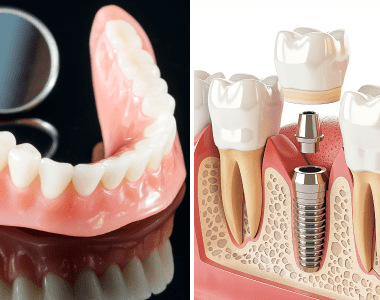
Everything you Need to Know About Scaling and Root Planing
Scaling and Root Planing is a process of deep cleaning below the gumline that helps to treat gum disease.
Why Do You Need It?
Gum disease is caused by a sticky film of bacteria known as plaque. Plaque is always forming on your teeth. However, if they aren’t cleaned well the bacteria in plaque will cause your gums to become inflamed. When this happens, your gums will pull away from your teeth and form gaps known as pockets. Plaque then gets trapped in these pockets and can’t be removed with regular brushing. If untreated, gum disease may lead to bone and tooth loss.
If gum disease is caught early and hasn’t caused any damage to the structures below the gum line, professional cleaning is needed. If the pockets between your gums and teeth are too deep, scaling and root planing might be required.
What Happens During Scaling and Root Planing?
This deep cleaning process has 2 components. Scaling is when your dentist removes all the plaque and tartar (hardened plaque) on top of and below the gumline. Your dentist can then begin root planing, smoothing out your teeth roots to assist your gums to reattach to your teeth. Scaling and Root Planing could take more than one visit to complete and may require a local anesthetic.
After Care Tips
After a deep cleaning, you may have sensitivity in your teeth and gums for a couple of days up to a week. Additionally, your gums could also be swollen, feel tender and bleed. To prevent infection and control pain or assist you to heal, your dentist can prescribe a pill or mouth rinse. Your dentist may also insert medication directly into the pocket that was cleaned. Your dentist can schedule a follow-up visit to see how your gums have healed and measure the depth of your pockets. Good dental care is essential to help keep gum disease from becoming serious or reoccur. Brush your teeth twice a day with a soft brush, clean between your teeth daily, follow your diet, avoid using tobacco and visit your dentist often.

 Review Us
Review Us Review Us
Review Us 

